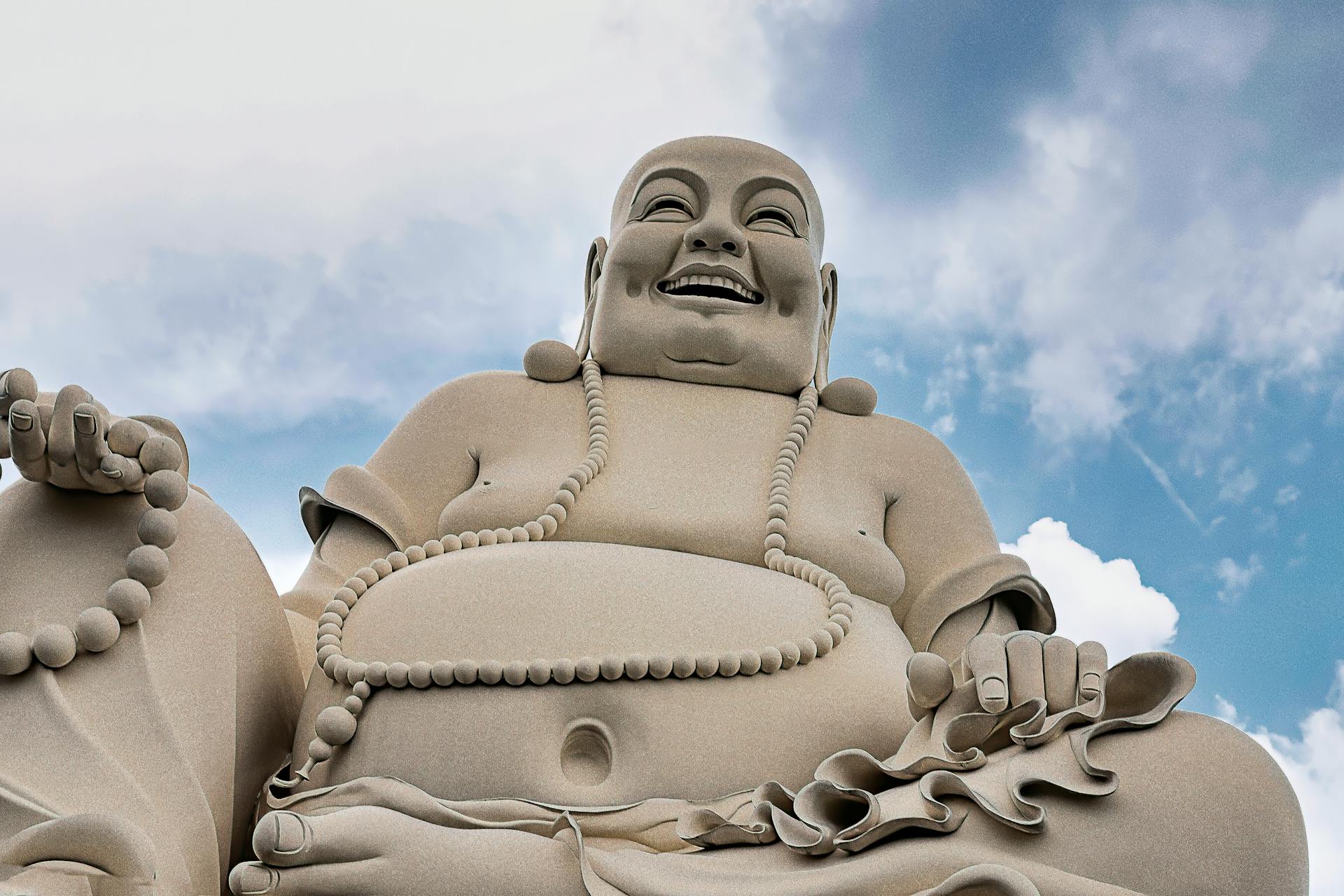
You have likely seen him everywhere, from designer jeans to wellness products: a rotund, laughing Buddha. Known as Hotei in Japan or Budai in China, he is one of the most recognizable and beloved symbols in East Asian traditions. With his big belly, jolly smile, and ever-present sack, Hotei represents prosperity, joy, and abundance.
Who is Hotei, the Laughing Buddha?
Hotei or Budai is a semi-historical figure who lived around the 10th century in China. The name Budai literally translates to “cloth bag,” owing to the constant accessory he was said to carry. Budai was an itinerant Chinese Buddhist monk who wandered from village to village sharing the goods in his sack with others, particularly those in need.
Through his generosity and cheerful nature, Budai became a legendary figure in China, revered as a symbol of happiness, abundance, and contentment. From China, the image of Budai as the laughing Buddha later spread to countries including Vietnam, Korea, and Japan. In Japan, Budai, now known as Hotei, became even more popular. He was eventually elevated into the pantheon of the Seven Lucky Gods (Shichifukujin).
Several myths surround Hotei. One of the most famous being that he was an incarnation of Maitreya, the future Buddha. This connection further elevated Hotei’s status, not just as a folk hero but as a semi-divine figure.
There is a popular misconception that Hotei and the historic Buddha are the same person, however this is unfounded.

Artistic representations of Hotei
Hotei’s joyful image has fascinated artists for centuries. The most common representation of Hotei is that of a rotund, bald man with a wide, laughing smile.
In traditional Chinese and Japanese art, Hotei is often shown wearing loose robes that barely cover his belly. He is usually depicted with his sack slung over his shoulder or lying beside him.
In some artistic representations, Hotei is surrounded by children, a nod to his role as a protector of the innocent and a bringer of joy. In others he appears in a seated meditation pose, with his robe hanging over one shoulder, similar to some depictions of the historic Buddha, Siddhartha Gautama.
Hotei’s image has transcended religious and cultural boundaries, appearing not just in temples and religious iconography, but also in home decorations, garden statues, and even commercial logos.

The Laughing Buddha in popular culture
The image of the Laughing Buddha, or Hotei, has found its way into various aspects of popular culture. His likeness is often used in branding, art, and entertainment, symbolizing prosperity, good fortune, and a carefree attitude.
Lucky Buddha Beer and True Religion clothing both famously incorporate Hotei into their logos and branding. A quick online search will yield countless other brands from piercing studios to cannabis dispensaries that borrow the name and likeness of Hotei.
His likeness can be found in all different mediums of art from album covers to movies. Hotei’s influence also extends to modern-day wellness and lifestyle brands that emphasize mindfulness, contentment, and a positive outlook on life.

Are the Buddha and Hotei the same person?
While Hotei is often referred to as the “Laughing Buddha,” he is not the Buddha in the traditional sense. The historical Buddha, Siddhartha Gautama, who lived in India around the 5th century BCE, is the founder of Buddhism and the one who achieved enlightenment under the Bodhi tree.
Hotei, on the other hand, is considered a Bodhisattva, specifically an incarnation of Maitreya, the future Buddha. A Bodhisattva is a being who has achieved enlightenment but chooses to remain on earth to help others attain enlightenment.
The confusion between Hotei and the Buddha arises partly from Hotei’s association with Maitreya. Additionally, the term “Buddha” means “enlightened one,” and while Hotei may not be the historical Buddha, he embodies the enlightened qualities of joy, compassion, and generosity.
Read more from Still Sitting: “Manjushri the Bodhisattva of Wisdom” and “Who is Bodhidharma?“.
A note on our research and sources
Still Sitting is committed to writing and researching informative, engrossing, and accurate articles for our blog. We know there are many places to find information online and we work hard to ensure that we are a trusted source for all of our readers. Our blog is intended to help you to learn more about our products and services, and about the cultural and historical subjects that we hold dear. As part of this commitment, we include the sources we used to write our posts:
An East-Asian Scholar on Hotei
